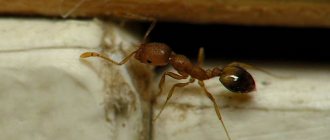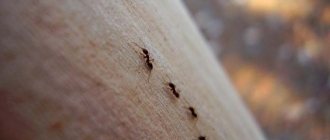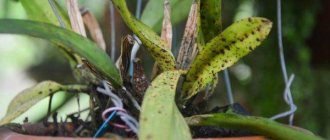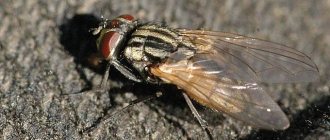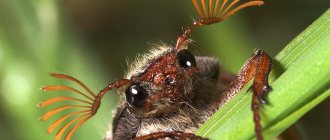Difficulty catching flies
One of the main difficulties when catching flies is that they penetrate unnoticed through open windows and doors, and while the former can be protected with nets, nothing can be done about the latter. It is especially difficult to combat pests in a private home, where the front door is constantly opening and closing. The fact that insects are attracted to many things also plays a significant role. Flies fly towards warmth, especially when cold weather sets in, they are attracted by light in the dark, as well as by the smell - they flock to the trash can or simply to uncollected food. If you leave a half-eaten sandwich or leftover soup on the table, you should also expect visitors. In addition, flies are surprisingly often attracted to the color white.
Although this insect is not particularly fast, it is very difficult for a person to catch it. This happens due to the fact that flies observe the world around them as if “in slow motion”, and therefore react more quickly to changes taking place. If flies are not eliminated in a timely manner, they will lay larvae directly in the home.
We must not forget that pests are carriers of parasite larvae and bacteria. Insects damage home textiles, glass and mirrors.
Getting rid of flies using insecticides
The chemical industry produces a wide variety of products for killing insects in human homes. Household insecticides are designed to kill not only flies, but also other insects that often invade homes.
Household insecticides come in various forms.
Chalk
Insecticides produced in chalk form are highly effective and easy to use. These are “Mashenka”, “Tornado”, “Agrometrin”, “Titanic”, which have long gained popularity. It is enough to draw a few lines in the favorite places where insects gather to make them disappear. But be careful with crayons if you have small children and pets in your family. Not only should the chalk not get into their hands (or paws). But the drawn lines should also be out of their reach.
Getting rid of flies using powders and granules
You can buy powdered fly repellents in the retail chain. For example, “Agita”, “Mukhita”, “Bayt”. The powder is diluted in water according to the instructions and sprayed on window sills, door jambs, and be sure to treat the trash can on the site. You can treat the walls. The powder contains a bait that can cause paralysis in flies and other insects.
It is worth paying attention to the granules “Evil Ted”, “Byte Fly”, “Fly Byte”. They contain pheromones that attract insects and a powerful instant insecticide
Flies will smell the pheromone from a distance, fly in and die immediately. These granules do not have any odor that attracts pets and are safe for both them and humans. It is enough to pour the granules into a small plate or saucer and place it, for example, on a cabinet. As a result, you will protect the room from flies for up to one and a half months. Only periodically you will have to remove dead insects.
You can get rid of flies on the terrace and in the gazebo by spraying a solution of powder on the walls, pillars, even the legs of tables and chairs. But the granules need to be placed at some distance from the gazebo. Because the smell of pheromones will attract flies from neighbors too.
How to get rid of flies indoors? We use an aerosol
If flies have flown into a room and you need to get rid of them quickly, aerosol products will come to the rescue. For example, “Evil Ted”, Dichlorvos, “Mukhoyar”, “Dr.Klaus”, “Raptor”, etc. They will not only destroy flies, but also wasps, mosquitoes, and fruit flies. The method and rate of spraying, the waiting period and the ventilation time of the room are indicated on the cylinder. Never remain in a treated area longer than necessary for treatment. And do not leave pets in the treated house.
Have you overcome flies and mosquitoes? Turn on the fumigator
A fumigator is an electrical device that heats special plates or liquid, which, when evaporated, kill pests. The composition of the active substance is selected in such a way that the vapors are completely safe for humans and animals. Therefore, you can use the fumigator in the presence of both people and pets. The best fumigators offered by trade, "Raptor", Taiga", Help.
How to get rid of flies in open areas.
In open areas, for example, near a dog enclosure, near a compost heap, or a garbage container, you can use traps. These can be adhesive tapes, for example “Offline Muchoff”. Or a trap bag from the episode "Evil Ted"
The traps do not contain toxic substances and do not require special precautions. Hang the traps near the entrance to the house, and the flies will remain on them, but will not get into the house
Why is it difficult to kill a fly?
Many people know that catching flies is not that easy. This flying insect has 5 eyes, two of which are main and three are simple. The main visual organs of flies include 4 thousand hexagonal facets. Each facet sees only part of the image; the overall picture is collected in the insect's brain. Thanks to panoramic vision, she sees all objects around her, and it is impossible to sneak up on her from behind.
In a second, the insect's visual organs transmit more than a hundred frames (images) to the brain, and this is 6 times more than in humans. Therefore, the fly sees all the rapid movements around it as if in slow motion and manages to fly away before it is slammed.
The insect's eyes are not only capable of recognizing the infrared spectrum, which means that in the dark the fly cannot see well, so it hides in secluded places.
Why is it necessary to control flies?
Flies are not only capable of spoiling food, but are also carriers of a number of dangerous diseases.
When a fly lands on food, it contaminates it. It is not known what the insect landed on before entering the house, and what bacteria and spores it carries on its legs. Flies are carriers of the following dangerous diseases:
- dysentery,
- diphtheria,
- conjunctivitis,
- typhus and typhoid fever,
- cholera,
- anthrax,
- salmonellosis,
- tuberculosis,
- eggs of parasitic worms.
Cleaning fly breeding sites
These flying insects enter a person’s home in search of food and favorable conditions for reproduction. Flies are attracted by the smell of food, rotting, spoiling food. On these products, the females will lay eggs, and the emerging larvae will fully develop.
Therefore, when starting the fight against annoying insects, you must initially eliminate all possible places of their reproduction.
Wet cleaning
To do this you need:
- do wet cleaning in the house;
- wash dirty dishes;
- take out the trash can and rinse it;
- limit access to products, hide them in the refrigerator;
- Clean pet cages and feeders.
All these actions will help reduce the number of flies in the house, but to get rid of them completely you need to take more radical measures.
The harmfulness of the parasite
In temperate regions, the Wohlfarth fly is a seasonal pest. The peak of its activity occurs in the summer months, and in the cold season it disappears. The main objects of parasitism are sheep and goats. After cutting the animals' fur, scratches and cuts remain on their bodies, which are used by pests to enter the body. Other livestock get sick less often, but cases of wolfartiasis occur in cows, horses, and camels. Females lay larvae not only in wounds, but also on the mucous membranes of the nose, mouth, ears, eyes, and genitals. Fly larvae, developing in the host's body, cause myiasis. Having penetrated the wound, they, with the help of secreted enzymes, decompose the tissue to the bones. For the first 4-5 days they feed on the surface, then they go deep into the body and become invisible during external examination. Mechanical eating of flesh causes severe pain, necrosis and gangrenous processes appear. Infected cattle noticeably lose weight, and swelling forms at the site of parasite penetration. Without treatment, death is inevitable.
The Wohlfarth fly threatens the health of not only animals, but also people. They attack patients with purulent wounds and infants sleeping in the open air. Females lay larvae in human natural openings, where they develop on mucous membranes. Parasites affect the gums, eyes, maxillary cavity, and ears. The patient experiences severe pain, inflammation, discharge of pus and blood. It is especially dangerous to make passages in the tissues before the larva emerges.
Attention. The consequences of the penetration of larvae into the mucous membranes of the ears and eyes are blindness and deafness.
Homemade traps - manufacturing options
Homemade fly traps
For home catching devices, improvised means are used. They attract pests by smell, light, and heat.
Plastic bottle
You will need an empty carbonated drink container, preferably mineral water.
- Cut off the top part. To do this, first make a hole with a knife, then carefully thread the scissors and cut off the neck.
- Turn the cut part over and insert it inside the bottle. Secure the edges with a stapler, tape, electrical tape or Moment glue.
- Place the trap in any convenient place or hang it from a chandelier or ceiling.
Sugar syrup is used as bait. Pour 5 tbsp. spoons of sugar into a saucepan, pour a little water so that the liquid lightly covers the grains of the main ingredient. Bring to a boil over low heat. Stir until completely dissolved, allow to cool slightly, pour into a bottle, coat the edges.
On a note!
To make your homemade device more effective, you should periodically breathe into the bottle. In this way, carbon dioxide accumulates inside, which attracts flies better than any other bait. You can catch pests in a few days.
Can
It is convenient to catch flies with an ordinary tin can of pet food or canned food. Peel off the paper sticker, rinse the jar, and dry it. Cover the outer part of the jar with adhesive tape, electrical tape, and press well with your fingers. After a few minutes they peel it off. The surface of the jar became sticky.
If the trap is used in the dark, place a small flashlight in the jar and cover with a lid. Install the structure in any convenient place where it is necessary to catch pests.
On a note!
Instead of adhesive tape, you can use double-sided tape, which does not need to be removed from the can. To attract insects, you can drop honey or liquid jam onto the surface.
Trick with the lights on
If you can't catch a fly in a large room, you can easily catch it in a small space. But for this you need to lure her, for example, into the hallway or into the toilet. At night, you can turn off the lighting everywhere except the room where you want to lure the insect. In a matter of minutes, the fly will already be where the light is.
As soon as the fly is in the room where you replaced it, immediately close the door. After this, you can easily catch it or destroy it using a regular fly swatter or rolled-up newspaper.
Glass jar
Glass jar fly trap
You can catch flies with small jars.
- They should be washed and dried.
- Apple cider vinegar is poured inside.
- Instead of a lid, use cling film. It needs to be pressed tightly to the edges, secured with electrical tape or tape. Carefully make holes with a toothpick or a sharp knife so that the fly can get inside.
The trap will attract insects with the smell of sour apple cider vinegar. Once inside, the pest will not be able to get out. You can catch a huge number of flies this way. Reusable containers should be periodically emptied, washed, and the whole operation repeated. Pests will be caught as long as the scent that is attractive to them comes from the trap.
Sprayer trick
This method is suitable for those cases when the fly does not want to sit on any surface and runs like mad throughout the apartment. You can make her lose the ability to fly. And when it stops, just pick it up with a napkin and take it outside or throw it out of the window. It is worth noting that this is the most humane way to combat flies, because in this case they do not need to be destroyed - you can simply neutralize them and throw them away.
Anyone familiar with the basics of aerodynamics does not need to explain the essence of this technique. This method is also well known to beekeepers. You need to take a bottle of water with a spray bottle and generously spray the fly with water. This can be done even when she is flying.
As you probably already guessed, microscopic drops of water fall on the fly's wings, making them heavier. The speed of the insect first slows down, and then the fly loses the ability to hold itself in the air. And in this state it is much easier to deal with it. This method is also used by beekeepers if they need to catch a bee colony that has strayed from the hive.
Lures
Flies feed on the juices of plants, rotting vegetables, fruits, meat, and fish. They are attracted by the smell of sour and the taste of sweet. The following is used as bait for homemade traps:
- sugar syrup;
- a piece of refined sugar;
- apples, pears;
- raw meat;
- honey;
- Apple vinegar;
- fruit juice.
What attracts flies most is the rotten smell. If the trap is set on the street, you can lure it with missing meat, salad, borscht, beer, and kvass.
To exterminate small flies and ordinary house flies, it is recommended to use several control methods. We should not forget about prevention - mosquito nets on windows and doors. Until mid-summer, house flies only buzz, irritating the nervous system with their presence; in August they are replaced by buzzers, which begin to bite painfully and cause an allergic reaction.
Application of paper bags
At home, you can catch flies using paper bags and tapes, making traps from them. To prepare Velcro you will need linseed oil and wax. Melt 10-20 grams of wax in a metal jar over a fire, add 150 g of linseed oil and 1 tsp. honey Mix everything thoroughly, let the mixture cool and soak paper strips with it, cut about 7 cm wide and 30-40 cm long. Similarly, you can prepare a mixture of rosin (2 parts), castor oil (1 part), a small amount of honey or jam .
Review
I live outside the city in a private house. In summer, windows and doors are often open, so flies are constantly flying. I usually buy adhesive tape at the store. I liked Raptor products. Sometimes you have to make it yourself using wax and flaxseed paste. Good bait for flies.
Olga, Kursk
You can catch flies using paper bags. Today, such grocery bags are always available in supermarkets. You shouldn’t throw them away; they will definitely come in handy on the farm. For the trap:
- cut it into strips 2.5-3 cm wide;
- Make small holes in the upper part of each, stretch a rope through them and tighten with a loop;
- Pour 120 ml maple syrup into a wide container, add 2 tbsp. l. brown and white sugar;
- put the strips into the prepared solution and leave them for several hours to completely saturate;
- remove the adhesive tapes from the bowl, allow excess liquid to drain and hang them in places where flies are most concentrated.
From a plastic container
To make a small, neat flytrap, take any transparent container - a glass, a plastic container. Place a little honey, sweet fruits, jam on the bottom, cover with cling film, in which 1-3 small holes are made. The operating principle of the device is the same as described above.
Advice! When using a homemade trap, do not forget to periodically dispose of any insects you encounter, wash the container, and renew the bait. Don't let the flytrap become a source of unsanitary conditions.
Using an attractive lamp
Flies tend to flock to light, so using an attractant lamp can help combat the problem. In order to catch an insect, it should be lured into a small space - a toilet or hallway. To speed up the process, you need to turn off the lights in the entire apartment, leaving the light bulb working only in a limited space. Once the fly is trapped, it can be caught or destroyed with a regular rolled-up newspaper.
Of course, special lamps that act as traps will also help solve the problem. Such devices operate silently, charging either from batteries, or from rechargeable batteries, or simply from the mains. Insects fly to the ultraviolet light emitted by such a lamp, as well as the heat and smell of carbon dioxide. A small fan draws the insects into the trap, where they become stuck on the adhesive backing.
Sometimes they use tape
It's amazing how much imagination and skill we use in everyday life. One of the popular ways to protect against flies is tape. Regular stationery or double-sided. It is glued to the ceiling, walls, even chandeliers. Like any sticky tape, insects will stick to it.
The method is impractical: the tape peels off from surfaces and falls off. Most often, on the inhabitants of a house, garage or other premises. Thin tape curls into a spiral, reducing the likelihood of a good catch. In addition, you then have to remove traces of tape and dust. But the flies actually stick to it.
If adhesive tape is chosen as a flytrap, then you should take a thick tape
Duct tape
Another type of DIY fly trap is homemade duct tape. Numerous videos on how to make a sticky substance from honey and sugar do not stand up to criticism. This coating will dry quickly, God willing, if you manage to catch a few insects. To get Velcro similar to store-bought ones, use the following composition.
- 2 parts pine resin (rosin), melted on a burner or water bath;
- 1 part castor or flaxseed oil;
- a little (“for taste”) honey, sugar syrup.
The result is a truly sticky substance that maintains a viscous consistency for a long time. Ribbons are cut from durable kraft paper, parchment, and oilcloth.
Advice! If you have ALT glue, which is used for small rodent control, you can use it for sticky tape.
A bag of water as a fly repeller
There is an opinion that flies do not like mirror surfaces that reflect sunlight. Therefore, as some housewives advise, you need to do the following:
- Select a whole plastic bag.
- We fill it with water.
- We throw shiny new coins into the water.
- We hang the package near a window or balcony.
The method, frankly speaking, is dubious. This way you can scare away sparrows and other small birds, but not insects. Regarding mirror surfaces, a reasonable question also arises: if flies do not tolerate them, why do we clean mirrors from traces of flies in the summer, almost every day?
Folk remedies
If you can’t deal with flies using standard means, you can try traditional methods. There are a lot of interesting, simple and complex ways to deal with annoying insects. The most popular ones are described below.
- Place a ladle with a small amount of water on the fire. When the water boils, throw in a handful of cloves and a couple of bay leaves. Boil for 10–15 minutes over low heat without covering the lid. The aroma will spread throughout the kitchen and protect you from uninvited flying guests for a couple of hours.
- To protect against flies, use lemon in combination with cloves. Cut it into slices and stick several clove inflorescences into the pulp. Place such devices on windowsills, near open windows. The aroma of lemon and cloves repels not only flies, but also mosquitoes and other insects.
- Take 1 tablespoon of dried wormwood and thyme inflorescences and brew with boiling water. When it has brewed, strain and pour into a spray bottle. You can add a couple of drops of lavender oil to enhance the effect. Use the solution to treat windows and window frames; you can simply spray it indoors - you will get double benefits from this. Scent the air and get rid of insects.
- Boil one lemon, grated, in a glass of water. Once the product has cooled, simply spray it indoors 2-3 times a day. Flies do not like the smell of citrus fruits and will avoid it.
- Try adding a small amount of kerosene to your window cleaning water. This product reliably repels flies and other insects. The smell will quickly disappear and you will not feel it. Flies will fly around your home for a long time.
- You can also use onions or garlic to control insects. Chop the onion and a couple of cloves of garlic on a saucer and place it on the windowsill. You need to change onions and garlic every 2-3 days, because these products quickly expire in the air and become ineffective.
Remember that any chemicals and folk remedies should be used with caution, following the instructions. For example, the aromas of herbs and essential oils can cause allergies and asthma attacks. Industrial chemicals can cause intoxication, so make sure the method you choose is safe before use.
Homemade fly strips
If you don’t want to spend money on small things, you can make Velcro yourself.
From tree resin
You can buy it at a gardening store or collect it yourself. Vegetable or castor oil is added to the resin, and sugar is used instead of jam or honey. To enhance the stickiness of the composition, add wax or turpentine. If you take wax, then you need no more than 10 g of the substance per 200 g of resin.
Cut strips up to 8 cm wide and no more than 1.5 m long. Wax and resin are poured into the prepared container and heated in a water bath. Oils are added 2 times less than resins. And you need no more than 40 g of sugar or sugar syrup.
Have you tried making your own sticky tape?
- Yes, they are no different from store-bought options.
- No, it's easier for me to buy a few pieces
- I'll definitely try to do it
- Your option in the comments
The composition in boiling form is applied to the paper, coating thoroughly so that there are no gaps. A clothespin is attached to the bottom to prevent the adhesive tape from curling up.
.
From a tin can
The used tin can is wrapped with electrical tape or tape. Then the tape is peeled off, leaving a sticky mark on the can from the adhesive side of the tape. A light source is left inside the jar to attract more flies at night.
From a plastic bottle
Bottles are used to make useful items: from drinking bowls to slippers. Use scissors to cut out the top and unscrew the lid. Pour water inside the bottle. Add a little sugar and mix thoroughly. Fresh yeast and a spoonful of honey are also added to the water. The upper cut part is turned over and inserted into the remaining lower section.
There should be a distance between the bottle with syrup and the neck so that the fly can fly inside. Once an insect is trapped, it will not be able to get out.
How to kill flies
If you are unable to humanely control flies, you can use an arsenal of chemicals that can get rid of the insects. Today there are a lot of effective drugs that can be used with maximum efficiency. Many of the chemicals pose minimal threat to human health and are not toxic to animals or harmful to plants.
Aerosol repellents can be used. But you need to study the composition in detail. If you have animals, children, or people prone to allergic reactions living in your home, it is better to avoid chemicals in this format.
There are gels and liquids that are used to treat windows and window frames. They protect your home from flies for a while, but it is not always convenient to use them, since they must be reapplied periodically.
If the problem with flies cannot be solved with simple remedies intended for home use, you can use the services of professionals. It is enough to call the specialists who carry out the processing and enjoy freedom from uninvited guests.
How to catch fish with a fly
Fishing for a fly is similar to fishing for a grasshopper. The fisherman's task is to present the insect as naturally as possible to the fish so that it can attack it. You need to find places in the river with a moderate current so that the fly can float. We do not attach a sinker or float to the fishing rod. We simply release the bait to float freely with the current and open the line handle on the reel. The line will come off the spool evenly and thus we will be able to fish a decent area on the river.
For such fishing, it is better to use a slow-action Bolognese rod 5-6 meters long with a flexible and thin tip. The flexible rod makes it easy to play along and control the bait. Be sure to use a special floating line that is resistant to sunlight and does not twist. The fishing line should be stiff and preferably fluorocarbon.
Of course, the ideal fly fishing tool is the fly rod. This fishing tool is perfect for surface fishing. Accurate delivery of the bait to the required distance and successful hooking with a fly rod are not so difficult. With its help, it is easier to fish hard-to-reach areas of water bodies.
Using your hands
You can try catching flies with your hands. If you don’t have the necessary materials in your house, you can use your own hands as a trap. This method is quite slow, but once you get used to it, it is quite feasible. Your hands will get a little exercise. To catch a fly at home with your hands, you need to do the following:
- bend your fingers so that your palm forms a cup - a kind of trap;
- make a few movements as a workout: quickly clench your palm, bending your fingers towards the base;
- leave a small space inside the clenched palm;
- as soon as the fly lands on the surface, you should approach it carefully (do not make sudden movements that will scare away the insect);
- now you need to wave your cupped palm two cm from the fly;
- clench your palm, bending your fingers towards the base;
The insect, sensing movement, will fly upward and end up inside the trap.
Catch a fly with your hands
On a note!
In order not to crush the fly, you should not squeeze your fingers very hard, otherwise it can be crushed.
Review
I tried using this method. It turned out to be quite difficult for me. But it worked once - I caught this annoying fly. I prefer to use other methods - Velcro, fly swatter, jar trap.
Alexandra, Vladimir
How to catch a fly in a room
Insects fly well, instantly react to any movement, and are almost elusive.
- You can catch pests with your hands, but this requires a quick reaction and skills. The fingers are bent towards the palm, carefully approaching the fly, without making sudden movements. As if knocking down a fly with a bent palm, quickly bending your fingers into a fist when the insect hits your palm. To catch it right away requires experience and training.
- It is much easier and faster to catch pests at home using special traps. One of the most common options is sticky fly tape, which is hung from the ceiling using a special pin. The adhesive tape retains its properties for about 3 months and gradually catches flying pests. They change it when the sticky part is full - just throw it in the trash can. The price of one piece is from 5 rubles. up to 100 rub. depending on the manufacturers.
- You can also catch flies in your apartment using special trap lamps. They can be used in any room or outdoors. The lamp operates silently and does not require large energy reserves. Operates from conventional or solar batteries, batteries, or mains. Attracts flying insects with ultraviolet rays, heat, and the smell of carbon dioxide. He pulls it inside the trap with a fan, where the fly sticks to a special adhesive base. Popular models Vector Trap, Deluxe, Terminator, Clatronic. Cost from 300 rub. up to several thousand.
- It's easy to catch a fly at home using a homemade device. How it will work, on what principle - the decision is individual. In this case, imagination is welcome. Examples of homemade traps are presented below.
On a note!
Any device will work much more effectively if you lure a fly. Juices of fruits, berries, sugar, honey, and some other products are used as bait.
How to make an electric shock flytrap
We will need:
- Energy saving light bulb;
- high voltage module;
- insulating tape;
- hot glue;
- AA battery.
Manufacturing:
- Let's disassemble the light bulb. We should still have a plastic case. And also a glass cone made of fluorescent tubes, mounted on a plastic base.
- We drill holes in the plastic on both sides.
- We take aluminum wire and thread it through one of the holes. We wrap the wire around the light bulb. Cut off the excess.
- We do the same with the second hole.
- There are 2 wires on the inside of the plastic base. We wrap one of them around the tip of the wire and bend it.
- We have 2 contacts left: another wire and a second wire.
- We connect the high-voltage module to the battery via a switch.
- We make a hole in the case and insert the switch.
- We insert the module into the case, now you need to solder all the necessary wiring.
- Solder the module wires to the battery.
- We fix it with electrical tape.
- To make the module hold better, we glue it to the body with hot glue.
- Then we insert the light bulb into the housing so that its contacts are in contact with the contacts of the high-voltage module.
- We twist it. Our stun gun is ready.
- We turn on the device. Flies will strive for the light from the lamp, but as soon as they fly up to the shocker, they will be electrocuted.
Do-it-yourself stun gun for flies - video
The method is effective, but not safe. Such a device should be turned on away from children and pets. Another disadvantage: the stun gun works as long as the battery is charged. As soon as its power weakens, the device will have to be re-soldered.
The most popular and interesting ways to make insect traps: some of them really help. Others are nothing more than a myth born of rumors and discussions. Try several options and choose the one that suits you best. And don’t let annoying flies bother your loved ones.
How to make your traps more effective
To combat them, you can use various methods, including traps, which have the following advantages:
- In fact, all models are safe for humans and pets because they do not involve the use of toxic chemicals.
- The result is always guaranteed; a certain number of individuals will in any case fall into the trap set and will be destroyed.
- Wide range of types and models. This variety allows you to choose the most suitable device; some of them are budget options and are available to all categories of people.
- A number of different devices can be made independently; it will not take a significant amount of time or effort.
However, the use of traps also has some negative sides, the main ones being:
Low degree of effectiveness compared to the use of insecticides, which can virtually instantly destroy entire populations.
No protective effect
Only those individuals that fall into the set traps will be destroyed.
It is necessary to wait for the moment when the fly pays attention to the trap and falls into it, while some other methods allow you to immediately proceed to the destruction of pests.. https://www.youtube.com/embed/Uwh7HfJN3uE. https://www.youtube.com/embed/Uwh7HfJN3uE
One of the most universal means for exterminating unwanted neighbors is a fly trap. You can make many options for its execution with your own hands from scrap materials.
Plastic bottle trap
In order to make a trap, you need:
- Cut the bottle along a line running 2/3 of its height.
- Turn the top part over and place it in the bottom, neck down.
- Secure both parts with tape.
- Pour bait into the flytrap - diluted jam, beer, honey or sugar syrup.
- Place a trap in the room where you want to catch insects.
The principle of catching a flytrap from a glass jar is the same as in the version with a bottle.
It is made as follows:
- Place fruit in a jar with a volume of 0.5 to 3 liters or pour in a sugar-containing liquid.
- Insert the narrow end of the funnel for pouring liquid into the neck of the jar and secure it with tape.
- Place a trap in the place where you want to catch insects.
To make this flytrap, a plastic container of any shape is used - round or square. The trap is made as follows:
- Place the bait in the container.
- Cover the top of the vessel tightly with cling film, in which, using a knife or awl, make small holes with a diameter of 3–4 mm so that a housefly can crawl through them.
- Place the trap in a place with a lot of insects.
The principle of operation of the trap is the same as the previous ones. Some flies may leave the trap, and its effectiveness will depend on how attractive the bait is to insects.
The advantage of this trap is that flies do not need to penetrate inside a closed space, which frightens some insects, so its effectiveness is higher than that of the previous presented options. You can do it yourself as follows:
- Mix 2 parts pine resin with 1 part linseed oil and a small amount of sugar syrup.
- Cut strips 3–4 cm wide from plastic film.
- Apply the prepared adhesive mixture onto the tapes using a brush.
- Hang traps in the room where you want to kill insects.
A simple, albeit somewhat controversial solution to protect against flies. In order to make such a repeller, you need the following:
- Fill a clear plastic bag with clean water.
- Drop a few shiny little coins into the water.
- Tie the bag tightly.
- Hang the repeller outside on a window or door—where the flies are likely to come from.
To make this trap, you need the following:
- Spread the compact disc with honey or thick sugar syrup.
- Place it in the freezer for 0.5 hours.
- Tie a thread to the disk and hang it in the room where you want to catch insects.
Attention! Flies should not have the opportunity to intercept a piece of food outside the trap. The effectiveness of crafts will be higher if all food is removed from the apartment and the trash is taken out. All food should be put in the refrigerator
Especially berries
All food items should be placed in the refrigerator. Especially berries
The effectiveness of crafts will be higher if all food is removed from the apartment and the trash is taken out. All food items should be placed in the refrigerator. Especially berries.
Preventing the appearance of flies in the apartment
The very first thing you should do to prevent flies from entering your home is to install mosquito nets on the windows. It is better to order frame options, since when installing such structures there are no gaps left. But this is not the only preventive measure.
- If the house has a balcony, it is also worth installing a net on the door. You can buy a frame structure or install a curtain with magnets.
- To repel flies, you can spray window frames and glass with a solution made from water and essential oil of lavender and eucalyptus.
- Ultrasound can also be used to control flies. Today there are special devices on sale that are designed specifically to prevent the appearance of insects of various types. Such devices produce a sound inaudible to humans, which is unbearable for insects.
- You can use special traps to prevent flies from flying into your house. They are installed on window sills. Such traps stop most flies, but you should not expect 100% protection from them.
- It is also recommended to buy standard plates, which are inserted into a special device and connected to an electrical outlet. They are effective for use in houses with a small living space - the aroma spreads quickly and repels all insects, not just flies.
- For maximum home protection, you can use a set of measures at once, combining means and methods. Thanks to this approach, the level of protection will increase significantly, and you will not have to worry about the safety of your apartment.
Catching a fly in an apartment is not as difficult as it might seem at first glance. These insects are fast and annoying, but if you choose the right method of protection, there will be no problems. If you do not fight flies, you may face negative consequences from their presence in the house.
Sources
- https://legkovmeste.ru/poleznye-sovety/delaem-lovushki-dlya-muh-svoimi-rukami-sladkie-kleykie-i-dazhe-elektricheskie.html
- https://stroy-podskazka.ru/muha/kak-pojmat/
- https://WikiParazit.ru/babochki-i-moshki/kak-ubit-muhu.html
- https://klopkan.ru/muhi/kak-poymat-vseh-muh-u-sebya-doma-potrativ-pri-etom-kopeyki/
- https://apest.ru/muhi/kak-izbavitsya-ot-muh/kak-pojmat-muhu/
- https://sovet.info/kak-pojmat-muhu-v-komnate-5-proverennyh-sposobov/
- https://beetlestop.ru/lovushka-dlya-muh-svoimi-rukami/
- https://notklop.ru/muhi/1-kak-izbavitsya/11-kak-pojmat/
[collapse]
How to get rid of flies at home
Remedies for these insects are divided into two types: industrial and folk. They have different effectiveness.
Store-bought products - effective protection
There are several types of drugs and insect repellents that can be purchased in supermarkets and hardware stores and used at home:
Sprays.
Granules.
They are diluted with water and sprayed indoors. The effect lasts up to three months. During treatment, people and animals must leave the apartment.
Powders.
A solution is prepared from the powders, which is used to spray the room. Insects begin to die 5 minutes after contact with the drug.
Crayons.
Apply in areas where flies live.
They are tapes on which an insect-attracting agent is applied. They are hung indoors. Traps must be installed away from animals, since the product applied to the trap is toxic.
Fumigator.
A device that is plugged into an outlet. A plate or bottle with insecticidal liquid is inserted into it. Under the influence of temperature, the product evaporates and kills insects.
Ultrasonic devices.
Their effectiveness is controversial, since ultrasound has a stronger effect on animals than on insects.
Folk remedies for fighting flies
Through experience and observation, people have determined that it is possible to make a product to combat dangerous insects and protect against them on their own.
The most popular of them:
It doesn't kill flies, but it repels them. Window frames and doorways are coated with vinegar. You can also spray the mesh on the windows. However, vinegar tends to evaporate after a short time, so spraying should be repeated periodically.
This acid can also be used to wipe tables and other work surfaces where food is stored and food is prepared.
Essential oils.
To repel flies, you can use fir oil, lavender, tea tree oil, and cloves. However, they quickly evaporate, so they provide only a temporary effect. To prolong the effect, use aroma lamps.
Flies are repelled by tansy and wormwood. Tansy is used fresh when hanging bouquets around the house. Wormwood can be used freshly picked or dried. Fresh grass is more effective, since it has the strongest smell. Hang it closer to window frames and doors.
Onion juice.
To repel flies, take an onion and rub it on frames, doors and ventilation. Onion gives a temporary effect and only repels some insects. It is advisable to use it in the kitchen, because the smell of this plant can be unpleasant in rooms.
Citrus zest.
Citrus peels and zests are placed in different places in the room and in the toilet.
Vodka.
Flies avoid the smell of alcohol, so they wipe surfaces with vodka and spray screens and window frames. The effect is temporary, as the alcohol evaporates quickly.
Turpentine.
It has a pungent odor that repels flies. Add a few drops of water and wipe various surfaces with the solution.
Indoor use may be unpleasant due to the strong odor, but can be used to treat toilets and garbage cans
Be sure to exercise caution when working with flammable liquids
Kerosene should also be added to the water, so its smell will not be too strong, but it is still unpleasant for flies.
Hanging water bags.
This exotic method came to us from Latin America. It is believed that flies become frightened when they see a distorted world through lens-like bags.
Lures for flies.
They make various mixtures: take something sweet, for example, honey or syrup, add ground black pepper. Another option is to mix 5 teaspoons of soda, 3 tablespoons of milk, and add half a spoon of formaldehyde. Pour the liquid into a plate and place a piece of bread.
It's very easy to do. Take a jar and make a cone out of paper with a hole at the bottom. The cone is placed on a jar, into which something that attracts flies, for example, jam, is poured. Insects fly in, but cannot get out. Particularly effective against fruit flies.
Another trap option is to cover a plastic cup with film and make holes in it. Pour syrup or a mixture of vinegar and dish soap into the bottom of the glass.
This video shows how to make a fly trap with your own hands.
